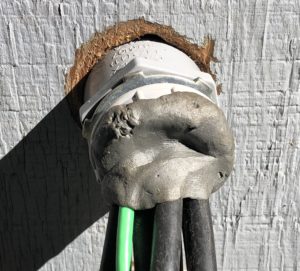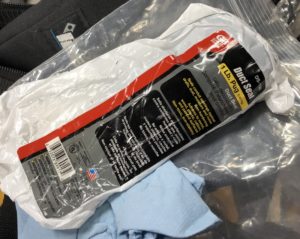With antennas on the outside and radios on the inside, the homes of hams need ways to run cables through walls, ceilings, or floors—while also blocking drafts and bugs. John KJ6WKT presented members’ solutions to this perennial problem during the April 1, 2022, SLVARC virtual club meeting. Below is a link to John’s presentation, which includes photos of his and other members’ cable situations and solutions.
Many thanks to John for preparing the presentation and for leading the lively discussion among meeting attendees: John AC6SL, Jeff AE6KS, Kerry K3RRY, Don K6GHA, JV K6HJU, Gary K6PDL, Tom K6TJK, Bob K6XX, Richard K8SQB, Tom KG6AO, Ken KG6PO, John KJ6WKT, Karen KM6SV, Bruce KN6DBR, Reed N1WC, and Ray W6LPW.
Attendees commented on the presented solutions and mentioned their own. Notable examples from my notes are: W6TKJ using an indoor balun to drive a 450-Ω ladder line that passes through the gap in the frame of an operable window; K6XX carefully cutting the wires of wall-vent screening to allow passage of individual coax cables; and observations that instead of using #4 steel wool (which rusts) to discourage critter passage, one can use copper turnings or—consistent with the spirit of ham radio—repurpose an old scouring pad! The idea of passing cables through a roof-vent pipe led to vivid stories of vent blockages past.
I had missed a contribution that had arrived via text message from Sam WB6RJH, and so I include the relevant portion from a subsequent conversation here.
Duct seal is a putty that can be used for closing off cable entrances from drafts as well as rodents. In hardware stores you can find it in a one pound “pug” in the electrical section. Tear off a chunk, roll it around in your hands to warm it up, then spread it out into a disk and mold the edges around cables and conduit.
In the attached photo of a cable entrance, you’ll not only see the basic application but in the upper left of the duct seal are tooth or claw marks from a rodent that had not been deterred by steel wool and forced an escalation. They appear to not like the stuff, give up rather quickly. One might stuff the conduit with steel wool as well as using duct seal on both ends to make it even more uninviting. It generally stays pliable, for ease in future changes to the cable bundle.
(click for larger images)

